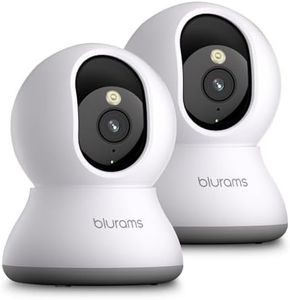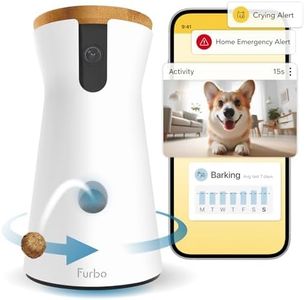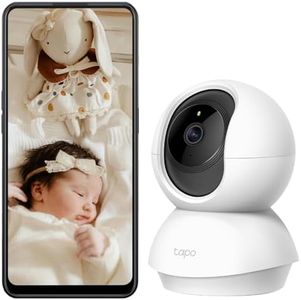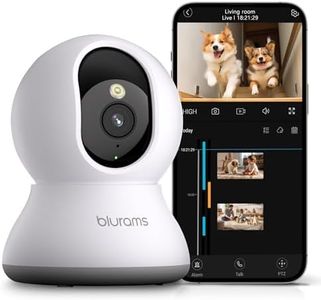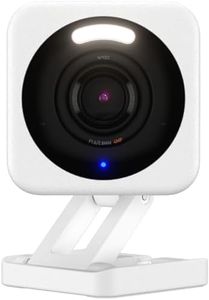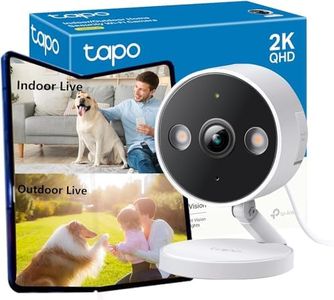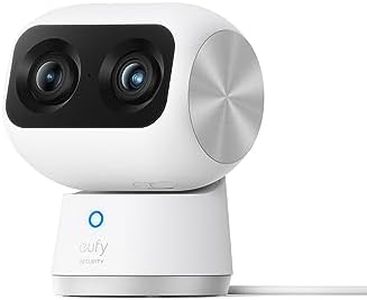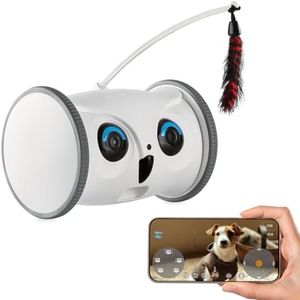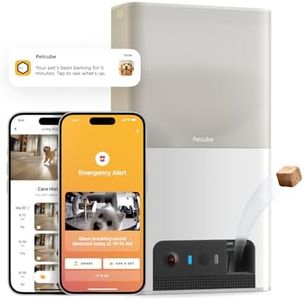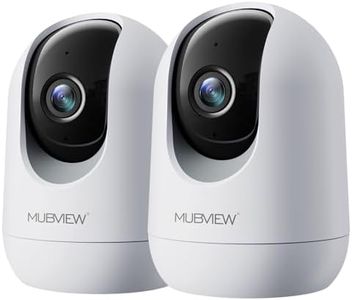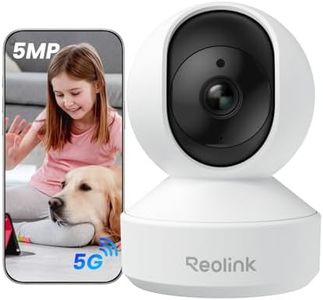We Use CookiesWe use cookies to enhance the security, performance,
functionality and for analytical and promotional activities. By continuing to browse this site you
are agreeing to our privacy policy
10 Best Pet Cameras
From leading brands and best sellers available on the web.Buying Guide for the Best Pet Cameras
Choosing the right pet camera is about understanding what you want to achieve: Do you want to check in on your pet occasionally, interact with them remotely, or monitor their behavior for longer periods? The best pet cameras offer features for both monitoring and interacting with your pet while you're away, but not every device will meet every need. Start by thinking about how often you’ll use the camera, the kinds of activities your pet does when alone, and if you’ll need extra features like two-way audio or treat dispensers. Evaluating these needs will help you sift through the many options and zero in on the features that truly matter to you and your furry friend.Video Quality (Resolution)Video quality refers to the sharpness and clarity of the live video feed you get from the camera. Common resolutions include standard definition (SD), high-definition (HD, such as 720p or 1080p), and even higher. Higher resolutions allow you to see more detail, which is important if you want to spot small behaviors or read tags on collars, but they also require a better internet connection for smooth streaming. For general check-ins and simply watching movement, SD might be fine, but if you want to clearly identify details or record videos, aim for at least HD. Evaluate your internet speed and the importance of crisp visuals to decide what level of video quality is right for you.
Field of ViewField of view describes how much of the room can be seen through the camera lens at once. A wider field of view (measured in degrees, like 120° or 160°) lets you see more area, reducing blind spots. Some cameras can also pan or tilt to cover even more space. If your pet has access to a large part of the room or you want to monitor multiple pets, a wide field of view or pan/tilt capability is helpful. If the camera is only set up to watch one specific spot, like a crate or bed, a narrower field of view likely suffices. Think about where you’ll place the camera and what parts of your home your pet visits most often.
Two-Way AudioTwo-way audio means the camera has both a built-in microphone and speaker, allowing you to listen to your pet and talk to them through an app. This feature is important if you want to comfort your pet or correct unwanted behavior remotely. If your main concern is simply seeing what your pet is up to, one-way audio may be enough, but for calming separation anxiety or interactive play, two-way audio adds extra value. Consider your pet’s temperament – if hearing your voice soothes or excites them, this feature might be important.
Night VisionNight vision enables the camera to capture clear video in low light or darkness. This is crucial if you leave pets alone at night or in rooms without much natural light. Cameras with infrared night vision allow you to see what your pet is doing even when the lights are off. If your pet is mostly active during the day and the camera will be in a well-lit room, night vision may be less critical. For overnight monitoring or monitoring in windowless rooms, make sure this feature is included.
Activity Alerts and Motion DetectionActivity alerts and motion detection mean the camera can notify you when it detects movement or sound, sometimes even distinguishing between pets and people. This is useful if you want to know when your pet is active, out of their usual spot, or if something unusual happens at home. Adjustable sensitivity levels can help tailor alerts so you aren’t overwhelmed by notifications. Decide if instant notifications are important for your peace of mind or if you only need to review recordings occasionally.
Treat Dispensing and Play FeaturesSome pet cameras go beyond monitoring, letting you interact by dispensing treats or powering toys. This is a fun way to reward or distract your pet and provides mental stimulation while you’re away. If your pet has anxiety or gets bored easily, or you want to train new behaviors remotely, this feature can be helpful. If interaction while away isn’t a priority, you can skip this and focus on simpler, camera-only options.
App Compatibility and Ease of UseApp compatibility refers to which devices you can use to control the camera and view feeds—usually smartphones and tablets. Ease of use is about how simple the app makes it to set up the camera, customize alerts, view video, and use interactive features. If you’re comfortable with tech, advanced settings may appeal, but if you want a hassle-free experience, look for cameras with well-reviewed, simple apps. Make sure the app works with your phone’s operating system and check for any required subscriptions for full features.
Cloud or Local Video StorageThis spec determines how footage is saved—either in the cloud (online) or locally (on a memory card in the camera). Cloud storage allows you to review video remotely but might include additional monthly fees. Local storage avoids ongoing costs but may be inaccessible if the camera is damaged or stolen. If you want continuous recording and secure backups, cloud options are reliable; for privacy or cost reasons, local storage may be better. Consider how long you want footage available and if you'd ever need to go back to past events.
